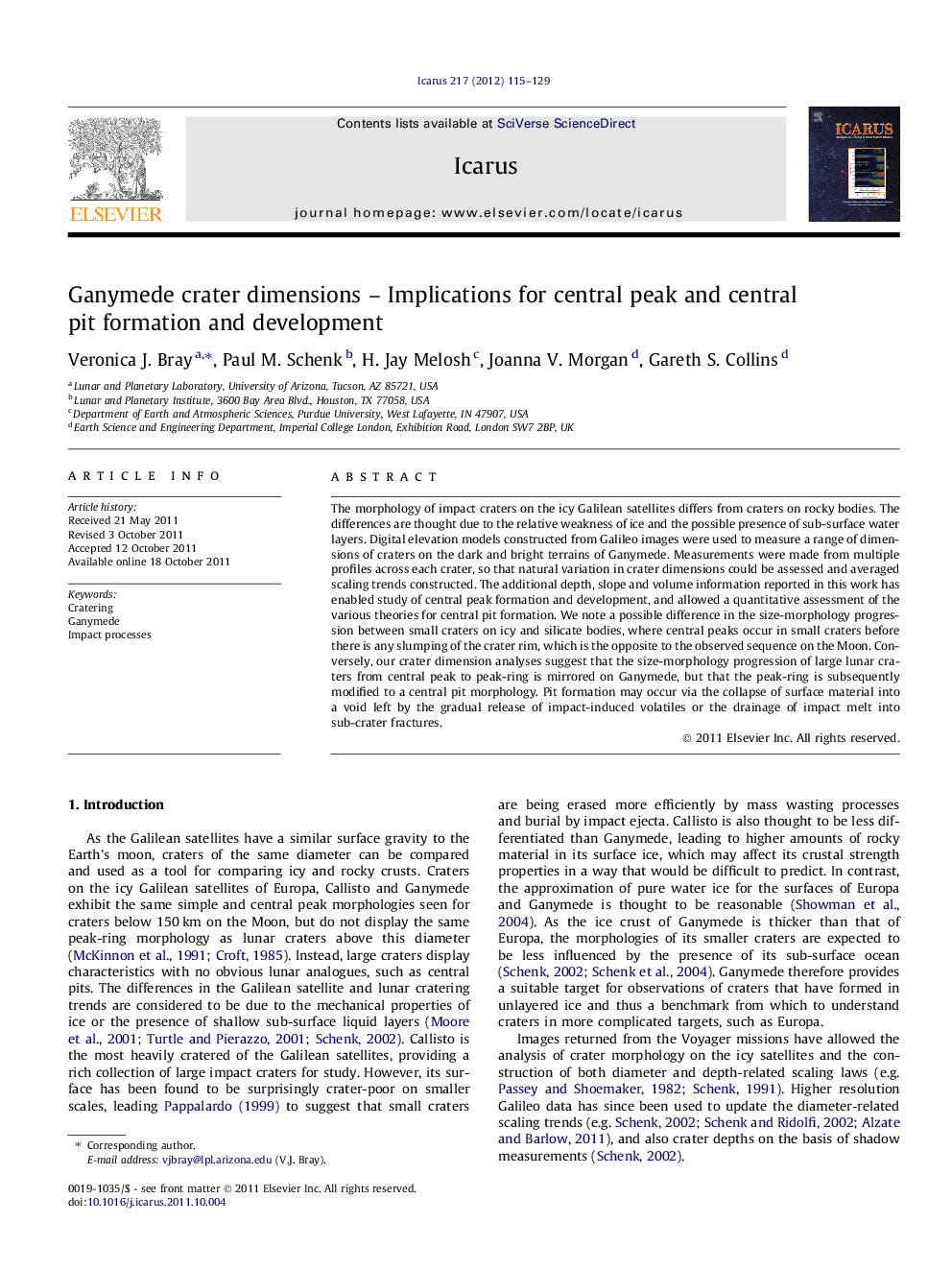| کد مقاله | کد نشریه | سال انتشار | مقاله انگلیسی | نسخه تمام متن |
|---|---|---|---|---|
| 1773904 | 1021151 | 2012 | 15 صفحه PDF | دانلود رایگان |

The morphology of impact craters on the icy Galilean satellites differs from craters on rocky bodies. The differences are thought due to the relative weakness of ice and the possible presence of sub-surface water layers. Digital elevation models constructed from Galileo images were used to measure a range of dimensions of craters on the dark and bright terrains of Ganymede. Measurements were made from multiple profiles across each crater, so that natural variation in crater dimensions could be assessed and averaged scaling trends constructed. The additional depth, slope and volume information reported in this work has enabled study of central peak formation and development, and allowed a quantitative assessment of the various theories for central pit formation. We note a possible difference in the size-morphology progression between small craters on icy and silicate bodies, where central peaks occur in small craters before there is any slumping of the crater rim, which is the opposite to the observed sequence on the Moon. Conversely, our crater dimension analyses suggest that the size-morphology progression of large lunar craters from central peak to peak-ring is mirrored on Ganymede, but that the peak-ring is subsequently modified to a central pit morphology. Pit formation may occur via the collapse of surface material into a void left by the gradual release of impact-induced volatiles or the drainage of impact melt into sub-crater fractures.
► Measurements and scaling-trends of crater dimensions on Ganymede are presented.
► Ganymede central peaks form primarily through uplift, not from rim collapse debris.
► Peak-rings are suggested to form on Ganymede, but are over-printed by pit formation.
► Pit formation mechanisms are assessed quantitatively and qualitatively.
► Ganymede dark terrain does not contain significantly more silicate than bright terrain.
Journal: Icarus - Volume 217, Issue 1, January 2012, Pages 115–129